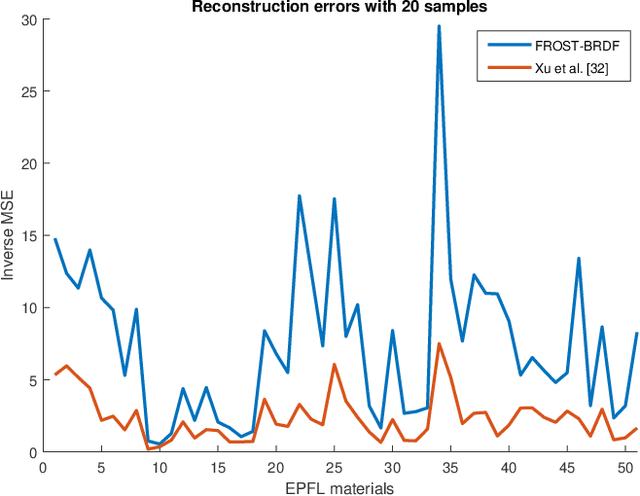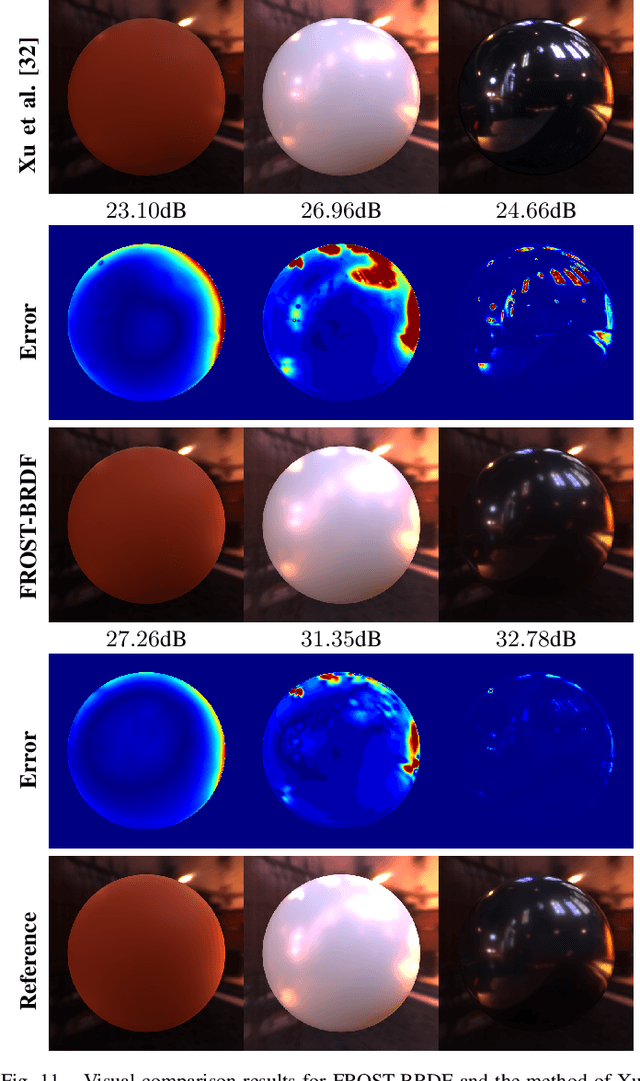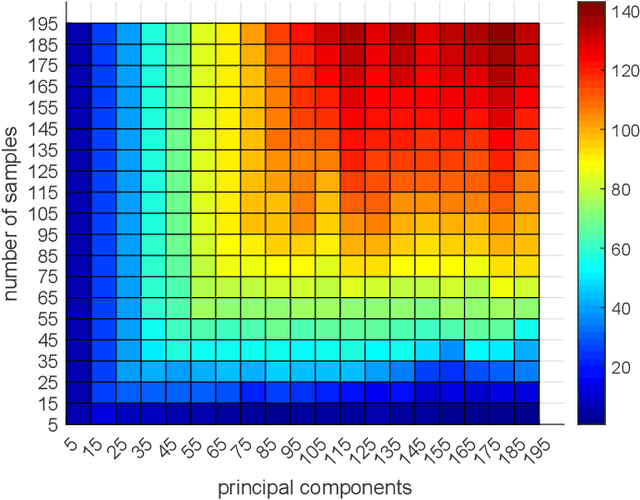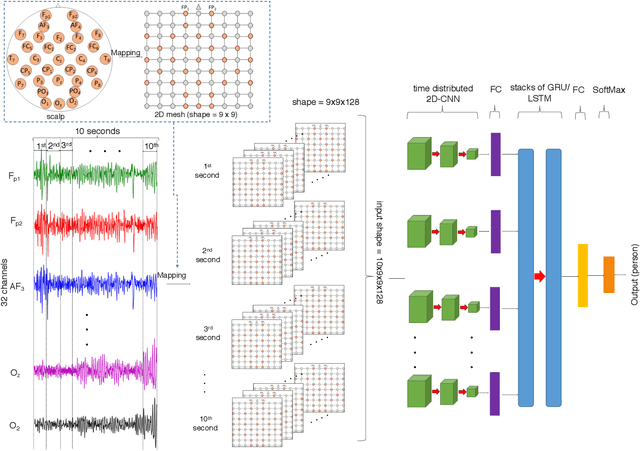Tanaboon Tongbuasirilai
FROST-BRDF: A Fast and Robust Optimal Sampling Technique for BRDF Acquisition
Jan 14, 2024



Abstract:Efficient and accurate BRDF acquisition of real world materials is a challenging research problem that requires sampling millions of incident light and viewing directions. To accelerate the acquisition process, one needs to find a minimal set of sampling directions such that the recovery of the full BRDF is accurate and robust given such samples. In this paper, we formulate BRDF acquisition as a compressed sensing problem, where the sensing operator is one that performs sub-sampling of the BRDF signal according to a set of optimal sample directions. To solve this problem, we propose the Fast and Robust Optimal Sampling Technique (FROST) for designing a provably optimal sub-sampling operator that places light-view samples such that the recovery error is minimized. FROST casts the problem of designing an optimal sub-sampling operator for compressed sensing into a sparse representation formulation under the Multiple Measurement Vector (MMV) signal model. The proposed reformulation is exact, i.e. without any approximations, hence it converts an intractable combinatorial problem into one that can be solved with standard optimization techniques. As a result, FROST is accompanied by strong theoretical guarantees from the field of compressed sensing. We perform a thorough analysis of FROST-BRDF using a 10-fold cross-validation with publicly available BRDF datasets and show significant advantages compared to the state-of-the-art with respect to reconstruction quality. Finally, FROST is simple, both conceptually and in terms of implementation, it produces consistent results at each run, and it is at least two orders of magnitude faster than the prior art.
Affective EEG-Based Person Identification Using the Deep Learning Approach
Jul 15, 2018



Abstract:There are several reports available on affective electroencephalography-based personal identification (affective EEG-based PI), one of which uses a small dataset and another reaching less than 90% of the mean correct recognition rate \emph{CRR},. Thus, the aim of this paper is to improve and evaluate the performance of affective EEG-based PI using a deep learning approach. The state-of-the-art EEG dataset DEAP was used as the standard for affective recognition. Thirty-two healthy participants participated in the experiment. They were asked to watch affective elicited music videos and score subjective ratings for forty video clips during the EEG measurement. An EEG amplifier with thirty-two electrodes was used to record affective EEG measurements from the participants. To identify personal EEG, a cascade of deep learning architectures was proposed, using a combination of Convolutional Neural Networks (CNNs) and Recurrent Neural Networks (RNNs). CNNs are used to handle the spatial information from the EEG while RNNs extract the temporal information. There has been a cascade of CNNs, with recurrent models known as Long Short-Term Memory (CNN-LSTM) and Gate Recurrent Unit (CNN-GRU) for comparison. Experimental results indicate that CNN-GRU and CNN-LSTM can deal with an EEG (4--40 Hz) rom different affective states and reach up to 99.90--100% mean \emph{CRR}. On the other hand, a traditional machine learning approach such as a support vector machine (SVM) using power spectral density (PSD) as a feature does not reach 50% mean \emph{CRR}. To reduce the number of EEG electrodes from thirty-two to five for more practical application, $F_{3}$, $F_{4}$, $F_{z}$, $F_{7}$ and $F_{8}$ were found to be the best five electrodes for application in similar scenarios to those in this study. CNN-GRU and CNN-LSTM reached up to 99.17% and 98.23% mean \emph{CRR}, respectively.
 Add to Chrome
Add to Chrome Add to Firefox
Add to Firefox Add to Edge
Add to Edge